Jiwa Nal (Nala, Nallah) trek in the Great Himalayan National Park is a crown in Himachal Pradesh’s already celebrated magical glory! Jiwa Nal Trek is as rugged as it gets. This high altitude, extremely isolated trek will take you through the Sainj and Parvati valleys.
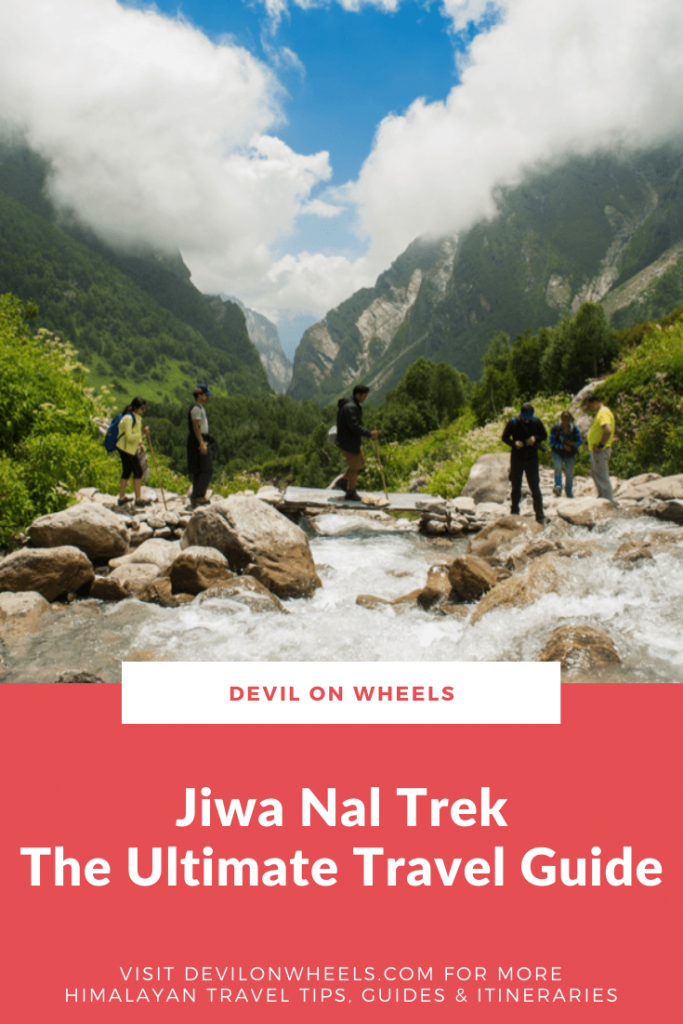
The trek is a surreal experience of lush meadows, steep gorges, two passes, and snowcapped mountains – all covered in 8 days!
Let's quickly dive into the details:
Great Himalayan National Park
As I shared in my previous blog on Sainj Valley –
“Great Himalayan National Park has been carved out in the Kullu Valley over an area of 1171 sq Kms. The Park, acting as an ecological bridge, flows through varying altitudes of 1500-6000 Mts, representing a wide array of natural wonders – alpine, glacial, temperate, and subtropical! It is essential to Pin Valley National Park and Rupi Bhabha Wildlife Sanctuary, all the while providing drawn-out wildlife corridors, in addition to the buffer areas of Sainj and Tirthan wildlife sanctuaries. The GHNP is the residence of over 375 fauna species, which are protected under the Wildlife Protection Act. This park has acquired World Heritage status in 2014 all due to its outstanding significance for biodiversity conservation.”
Jiwa Nal Valley
Jiwa Nal Valley lies on the Jiwa Nal river and is adjacent to the Sainj Valley. The water source for this river is Sarthoo Pond, which is fed by glacial melting. Eventually, the river flows into the Beas river at Siund, around 35 KMs from Aut.
The Jiwa Nal trek begins at Siund and will take you around 8 days to accomplish!
Preparation for the Jiwa Nal Trek
The trek might provide you with soul-stirring experiences and views to last you a lifetime, but it is no easy feat. You’ll not spot any human activity (barring some occasional shepherd movements), allowing you the peace, quiet and tranquility like no other place. However, this also means you’ll need to be fully prepared for all eventualities.
Physical & Mental Strength
Jiwa Nal trek is a difficult trek with highly endless trails. Thus, Jiwa Nal requires prior trekking experience in high-altitude regions. Also, this trek requires a sound knowledge of geography and estimation of the path along with knowledge on locating the burjis (cairns), as you’ll be in the remotest corners of the middle Himalayas.
You will be trekking roughly 10 hours a day. This effort is a grueling schedule to keep daily, especially if you factor in the lack of oxygen. Of course, having a Diamox can be a solution, though, it is temporary. In my opinion, you can better prepare for this trek by exercising daily for 1-2 months before your trek. Along with this, you must participate in 10-15 km of intense runs every week, at least.
Permits
To embark on this trek, you’ll need to obtain a permit from the Sainj Office of Great Himalayan National Park. If you’re carrying a camera, do note, there are extra charges. The fee, as of 2019, is INR 100 per day for Indian Nationals and INR 500 per day for Foreign Nationals.
Porters/Guides
It is highly advisable to have local porters and guides trained by the Great Himalayan National Park Authorities to assist you during your journey.
Trek Highlights
- Crossing two passes in 8 days should have your hearts pumping, and not just because of the lack of oxygen!
- The trek is very demanding physically. There will be days where you ascend 2000 meters and descent 1500 meters in the same day. Over 3,500 Meters elevation change overall in a day can be extremely strenuous.
- The trek also takes you through some stunning meadows along your way to Sarthoo Pond.
| Difficulty | Difficult |
| Duration | 8 days |
| Maximum Altitude | 15,419 Ft |
| Base Camp | Siund, Sainj Valley |
| Best Time to Visit | April to June, September to November |
| Total Distance covered | 110 Kms |
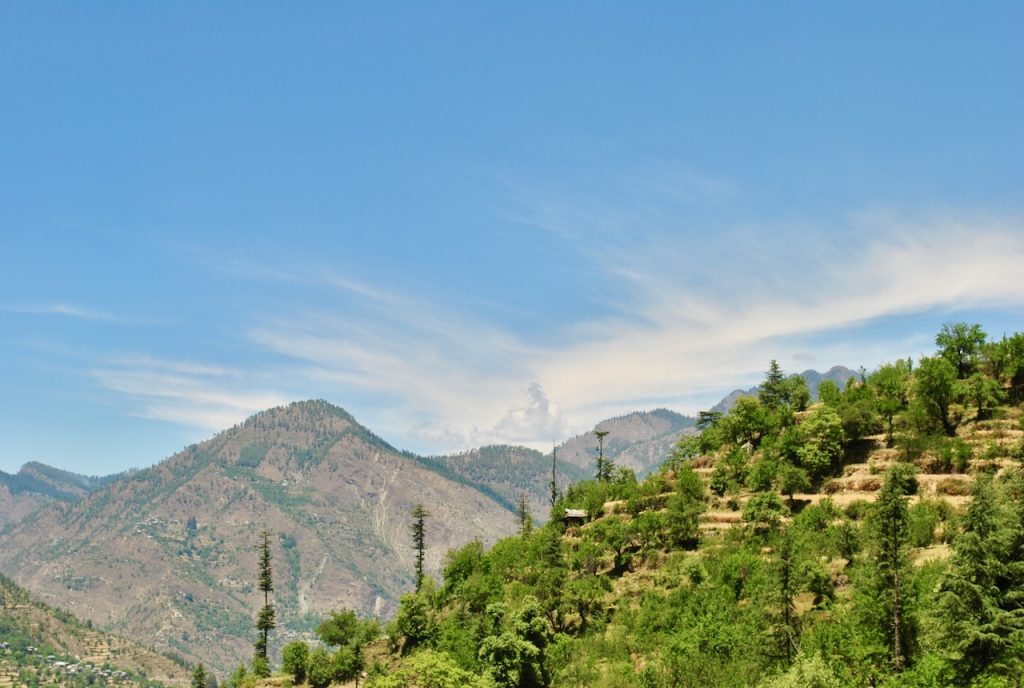
Detailed Travel Itinerary of Trek
Let’s get into the nitty-gritty of what to expect. Please note, this is just a guide – on the day of your journey, the conditions define everything. Hence, always be vigilant and alert as you are entering extremely isolated and remote corners of the Himalayas.
Day 0 – Starting the Jiwa Nal Trek
I have covered the Sainj Valley extensively in my previous blog. However, to give you a brief – Sainj lies around 550 km from Delhi and lies on a diversion from the Chandigarh – Manali highway. Right after the Mandi tunnel lies a small village – Aut.
From Aut, Sainj is 1.5 hours away. There are overnight buses available from Delhi to Manali. Get off at Aut, right after the tunnel. Try getting an overnight bus, so you’ll be able to accomplish all the tasks on your first day in Sainj.
Day 1 – Sainj Village
You may get a bus from Aut towards Sainj (Ropa and Neuli are tiny hamlets in the valley) or hire a cab. A personal cab will cost you around INR 1500-2000 (as of 2019). While you may get shared cabs heading to Sainj, the chances are less, as not many tourists head to the region.
GHNP has guest houses in the region, which can be booked online. It is highly recommended to spend a day in Sainj, as you’ll be required to get your permit for the trek.
The permit can be taken from GHNP Park Office in Sainj, around 2 KMs from the guest house. However, the officials don’t start duty before 11-11:30 AM.
Day 2 – Reaching Bhagi Kashyari
Some people start their trek from Neuli itself – which requires an easy hike of about 14-15 KMs. However, you may head further ahead to Shanshar – the last motorable point, which will take you around half an hour from Neuli by cab.
On the first day, you’ll be climbing from 6800 Ft to 8530 Ft, crossing through villages and settlements, and overall, it should not take you more than 4 hours. Bhag Kashyari is a small settlement, and while there are no campsites, you may pitch your tents in the school playground. Alternatively, you may move further ahead by 3-4 KMs, if you prefer. You may visit the beautiful Manu Temple nearby.
Travel Tip: You can always combine the trip with Tirthan Valley.
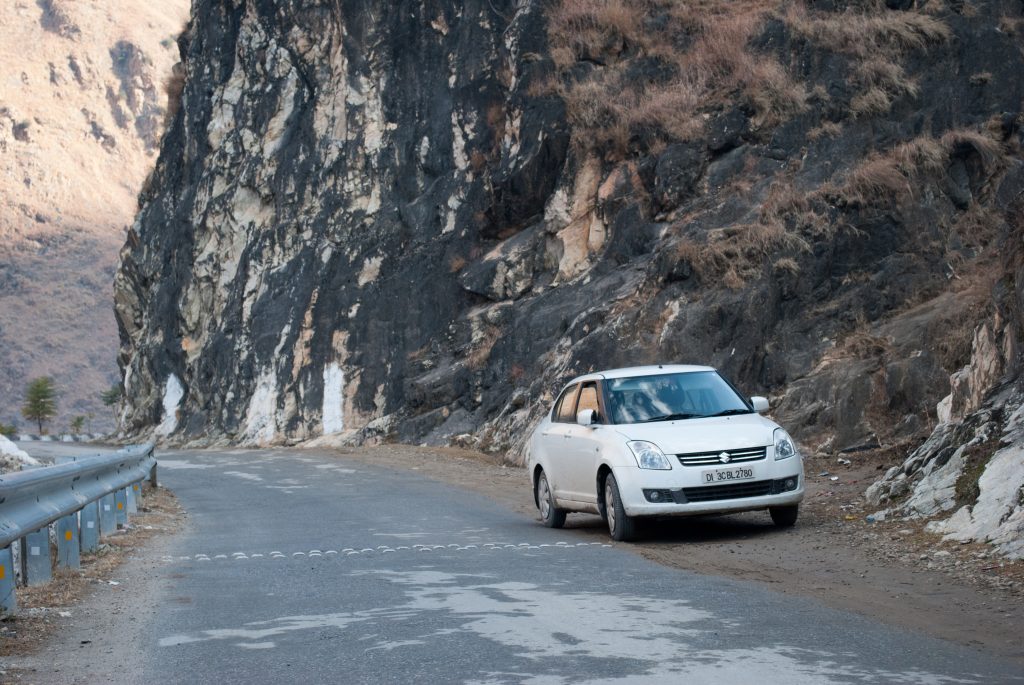
Day 3 – Kandi Galu, Subli Thatch
Today is going to be a long day. After easing into the trekking routine on your first day, you’ll be covering a mind-boggling distance of 20 km. So prepare yourself mentally. You must start as early in the morning as possible as the heat might get scorching during prime daytime hours.
From Bhagi Kashyari, you’ll start by descending for an hour to reach the bottom of a slender gorge, climb up again through thick forests. After a strenuous climb, you’ll be descending again and repeating the process three times before you reach the mountain pass of Kandi Galu (elevation of 10728 feet), at an elevation of 12139 feet.
What to explore
The entire trail leading up to Kandi Galu is densely forested, and thus, you’ll need to be mentally alert and emotionally prepared to take on this challenge. Having a keen sense of direction is mandatory as there are minimal trail markings, which can lead to a lot of confusion, and panic!
Upon reaching Kandi Galu, the second stretch of your trek for the begins. From Kandi Galu, you’ll be descending for around 1.5 hours to reach Subli Thatch. By the time you reach Subli Thatch, you’re past the tree line. The Thatch is nothing but two dilapidated rooms.
You can choose to camp around this region by pitching your tents as you fancy. This region is a great area to be for the night as the water source and firewood is easily available. While I can advise you to enjoy the night time skies, chances are, you’ll be too tired to care much about this.

Day 4 – Dwada Thatch
You will start your day today with a very tricky descent through high bushes, dry stream beds where you’ll be hard-pressed actually to find the ground, forget about the trail! But, you’ll be guided by the Jiwa Nal – whose gurgling rumble can now be heard.
Do note; there are only a handful of spots where you’ll be able to cross the river – use the first opportunity when you spot a place worthy of the crossing. There are some bridges along the river, but they’ve been washed away for a long, long time now.
This is a tricky day today. The entire 8 km stretch of the day’s work will take you around 5-6 hours, and you’ll need to be very careful. However, if you start bright and early, you might reach your next campsite in Dwada Thatch by lunchtime. Dwada Thatch is similar to your previous night’s home and lies at 10334 Ft. Like last night, you’ll be able to get firewood and water easily tonight.
Important Tip: Do not forget to carry these top 12 things for any trekking or hiking trip.
Day – Buffer Day on your Jiwa Nal Trek
Also, this is the place in Himachal where you may decide to use your buffer days and add in an extra rest day. While it is important to stick to the schedule as much as possible, if the journey thus far seems too taxing, then it is advisable to add in an extra day here.
This addition of day will provide you with the much-needed strength for the journey up ahead. Also, the peaceful valley along the cascading Jiwa Nal river is a sight to remember and absorb as much as you possibly can. You may even choose to make a round trip from here and visit Sarthoo Pond today itself.

Day 5 – Sarthoo Pond, Khandedhar Top, Lalbatti or Chippi
Another long day awaits. You will be covering a mind-boggling distance of 21 km, and this should take you around 11 hours, so brace yourself! You’ll reach a maximum elevation of 14,435 feet today. The views today will be breathtaking – lush green meadows, a glacial lake, snow-covered peaks, no human contact, no connectivity – complete solitude!
The beginning of the day is the most gorgeous – with a pleasant hike traversing lush green meadows to reach Sarthoo Pond with an elevation of 11,482 feet. This small but beautiful, the lake is a glacial lake and has the perfect emerald hues. Since you’re at a decent height, you’ll have a wonderful vantage point of the entire Jiwa Nal Valley.
Option 1 –Round Trip to Sarthoo Pond, head to Chippi the next day
Here, you have two choices – head on back to Dwada Thatch and rest up (read buffer day above!) or move on ahead to Khandedhar Top. If you choose the first option, you will be crossing the Phangchi Galu – the highest point of the trek. On the next day, you’ll have to cover a long distance to Chippi.
Option 2 – Lalbatti
Through the second route, you’ll be heading into a real grind, which begins after reaching Sarthoo Pond. From here, the hike is steep and strenuous. Taking around 3 hours to reach the Khandedhar top – you’ll witness the valley evolving from the lush green companion you had for the duration so far to a glacial deposit and rock debris zone on the other side.
Travel Tip: You can travel to Jibhi-Banjar and come back from Shoja – Jalori Pass route after completing the Jiwa Nal trek.
On the other side of the mountain top lies your campsite for the night – Lalbatti, situated at the height of 13,123 Ft. The entire descent from Khandedhar Top will take you around 45 minutes. Lalbatti has limited access to water, and firewood is not available. It might be freezing and extremely windy here.
Day 6 – Chippi
By now, you must be used to hiking 8-10 hours a day. This day is no different. While today will take you further down in your overall elevation, it will be tricky to maneuver today.
From Lalbatti
You’ll be covering 18 km in around 8 hours. Initially, you’ll start with a descent from Lalbatti but then grind you way back up to reach Phangchi Galu reaching your maximum elevation during the trek at 15419 feet. This trail is the trickiest so far, being extremely narrow and having steep slopes.
You may have the added stress of rocks falling, and thus, it is advised to exercise extreme caution and be highly alert. This section, in itself, might be a challenge given the lack of oxygen at this height. However, be vigilant and aware at all times, of your surroundings and your footing!
After 2-3 km of worrisome trekking, the route will start showing some mercy. But, this doesn’t mean the need to be attentive is over. The glacial moraines can be confusing and misleading when it comes to direction. For a basic rule of thumb – stick to the left of the glacier’s tongue.
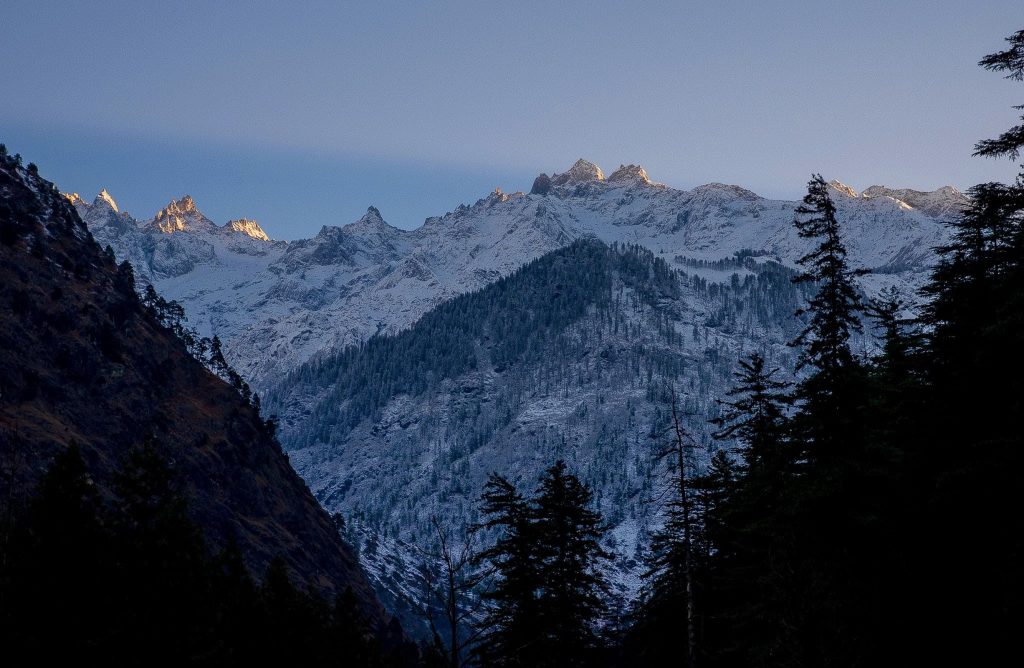
From Dwada Thatch
If you had chosen to return to Dwada the previous day, you would have to cover a long distance of 24 KMs while also crossing the mountain pass of Phangchi Galu. This pass leads into the Parvati valley, but, man oh man, this is a tough part – not going to lie!
To add to the lack of oxygen and the tricky route- you will even have to circumvent cold and windy weather! Also, to highlight – this part will not be easy on your knees.
Chippi
Chippi is a happy place to be (see what I did there?) – it provides stunning views of the Parvati Valley landscape. Also, after a long and grueling day, you’ll be glad to be close to firewood and water points.
Day 7 – Barshaini
If you thought the sight of Parvati Valley would make your life easier, think again. Today’s trek is 16 KMs long and should take you 7 hours to complete. Right off the gate, a lot of technique is required in traversing through the rocky terrain and mountain streams.
The downhill part, however, is relatively easy, with only a handful of steep sections thrown in for variety. Crossing alpine meadows and tiny shepherd settlements will remind you of your reentrance into the human world.
Finally, you’ll reach Pulga, a favorite little settlement of mine. Perched at the height of 9514 Ft – Pulga is the perfect Parvati Valley village with lots of traditional architecture synonymous with the region.
From Pulga, you’ll be descending through a bridge on to Barshaini. From Barshaini – take a bus to Manikaran or Kasol or even Kullu for your further journeys.
Day 8 – End of Jiwa Nal Trek
Unfortunate, that all trips have to end. A rendezvous with nature always seems to be too short and goes by too quickly. But, I am sure the strenuous eight days will be worth every aching bone in your body.
You should always carry your water bottle and refill it as many times as you need water. It will not only keep you hydrated always, but you will also help in saving the Himalayas from plastic garbage. Remember, every tiny step counts and your step in this direction can help save the Himalayas too !! 🙂 🙂
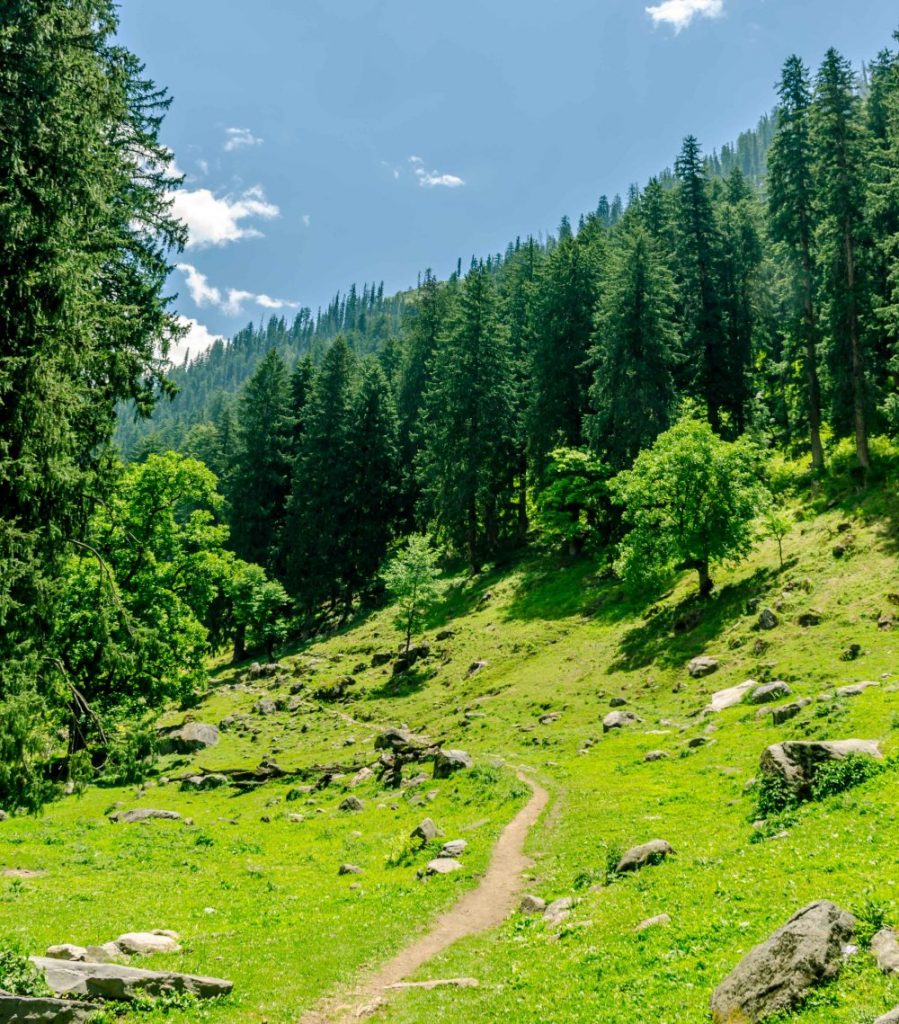
Conclusion
One of those treks that require high precision and alertness, Jiwa Nal trek takes you along the most scenic and challenging routes. Covering a might distance in 8 days, Jiwa Nal is sure to stay with you for a long time to come.
Given the status of GHNP as a UNESCO World Heritage Site, the number of travelers of this region is limited, taking you through extreme isolation. However, the mental and physical strength you gain through accomplishing such a vigorous journey is not something easily achievable.
Have a travel question?? You can subscribe to my YouTube channel and leave a comment to ask your travel questions about traveling to the Himalayas.
Have you been on this trek before? Any details we missed out on in this article? Any other off-beat treks you’d like us to talk about – comment below, and we’ll be happy to go hiking.
Of course, do not forget to share this Jiwa Nal trek travel guide with your friends or family who are planning to make their upcoming trip to Himachal.





